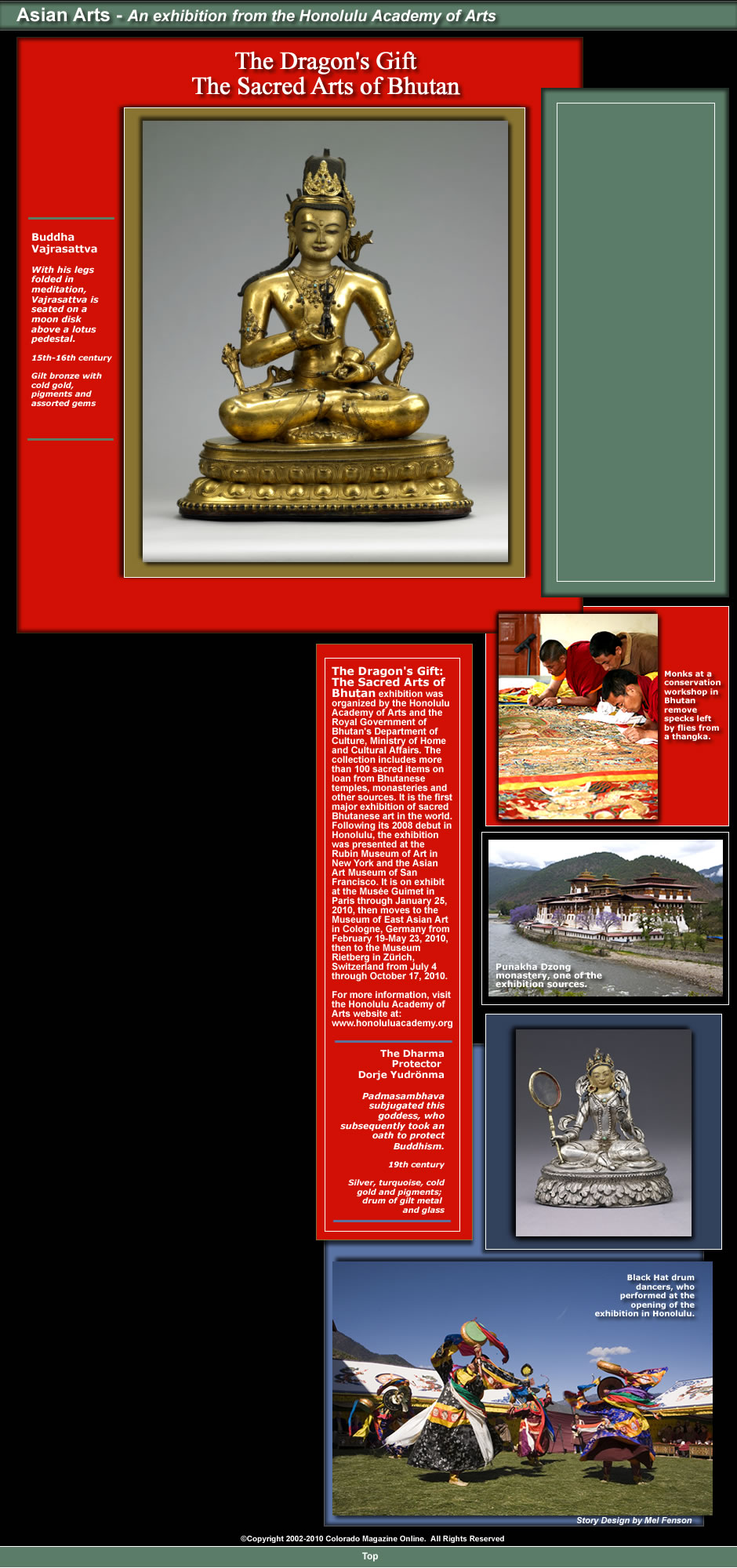
Bhutan: World's Center Of Gross National Happiness
by Bill Slatkin
Smack-dab
in the middle of raging animosities ignited by frequent acts of aggression
is a serene place somehow untouched by the hostility that surrounds it.
A spot on the map? A state of mind?
When I first read the name Bhutan, I mistook it for a misspelling of something
else--a type of cigarette lighter perhaps-- (Butane). But I recently learned
about Bhutan, a tiny country that clings to the side of a mountain in the
Himalayas, its citizens reportedly the most stress-free of any population
in the world.
Yes, serenity alongside neighboring Tibet with its struggles under Chinese
oppression. Sweet satisfaction right next to Bangladesh, home of the world’s
poster children for deprivation. A bastion of peace directly north of the
countries engaged in the nuclear arms race now raising the stakes in the antagonisms
that affect the region.
Their practice of Buddhism is what keeps the Bhutanese among the happiest
people in the world. That’s what I learned at a traveling exhibit of
Bhutan art at San Francisco’s Asian Art Museum, brought here by the
Honolulu Academy of Arts and the Development of Culture, and the Ministry
of Home and Cultural Affairs of the Royal Government of Bhutan.
As the docent pointed out the important features of the painted tapestries
and sculptures on display, she explained how the philosophy of “detachment”
developed and passed on, through the ages, by the sages in and around Bhutan,
has enabled the populace to enjoy an idyllic existence, unspoiled by the expression
of familiar human attitudes that bring anguish to those just over the hills.
Imagine, heaven on earth.
Or not.
According to Tek Nath Rizal, a Nepalese human rights advocate whose experience
in a Bhutan jail was not unlike that of Abu Graib detainees, the sublime way
of peaceful life is yours to enjoy in Bhutan--as long as you are Bhutanese.
In his book, “Torture Killing Me Softly,” published in September,
Rizal says that the people who’d emigrated from Nepal over the past
several decades, and came to represent at least one-third of Bhutan’s
population, were classified as illegal immigrants in the early 1990s. Their
choice was to remain in Bhutan as second-class citizens, or join the refugee
migration through India back to Nepal.
By the year 2000, a majority of the Lhotshampas (the name given to those who
were displaced by Bhutan’s new policy) were living in refugee camps.
And they weren’t particularly welcome, considering there already were
enough problems in Nepal without another 100,000 people to absorb and to govern.
The plight of the refugees was recognized by human rights organizations, and
some were relocated, including a number of families moved to New York and
placed in a Bronx neighborhood. But there has been little aid for most Lhotshampas,
probably because of their small numbers compared to the displaced populations
in Africa and the Middle East.
Meanwhile, proud of the reputation for peacefulness, the Bhutanese King Jigme
Singye Wangchuck declared that his country leads the world in what he calls
“gross national happiness.”
Even Rizal, the jailed human rights leader probably would not claim that Bhutan’s
treatment of its unwanted minority is as horrific as that practiced by some
other countries. Yet the demonstration of this ethnocentrism does blemish
the country’s distinct “peace” brand.
King Wangchuck’s explanation for the ethnic cleansing campaign is that
the country was being prepared for democratic rule--a system of government
that works best in a highly homogeneous setting.
And Wangchuck, proceeded to introduce dramatic changes, nudging his Bhutan
into the modern political era by writing a constitution and forming a representative
government, to which he handed over much of his power.
Perhaps this tiny nation is caught between the ancient world, typified by
the magnificent art featured in the touring exhibition, and modern times,
in which governments practice a form of democracy grounded in political expediency.
And that dichotomy is apparent in the lives of the Bhutanese. The teenagers
don’t wear Levis and hang at the mall. The population still is required
to wear traditional garb and to continue some of the religious practices rooted
well into the past.
But that doesn’t mean the population is protected from the influence
of the developed world.
Over and through the massive Himalayas come the daily blasts of television
signals with their fresh load of Western culture. And the people, while dressed
in their 14th century attire and meditating in front of a two-thousand-year-old
tapestry, are also sneaking an occasional peek at one of the country’s
new TV sets, so they can catch up on game shows, sitcoms and--a Bhutanese
favorite--Desperate Housewives.
Bill
Slatkin is Colorado Magazine Online's West Coast Correspondent,
based in San Francisco. billslatkin@mac.com

 |

|